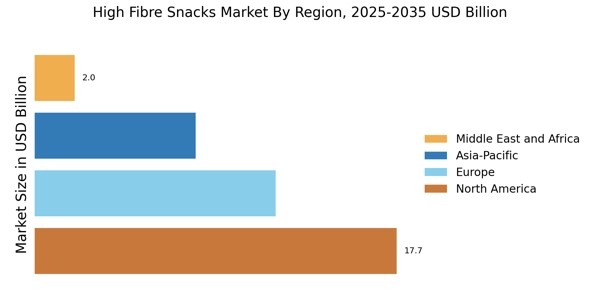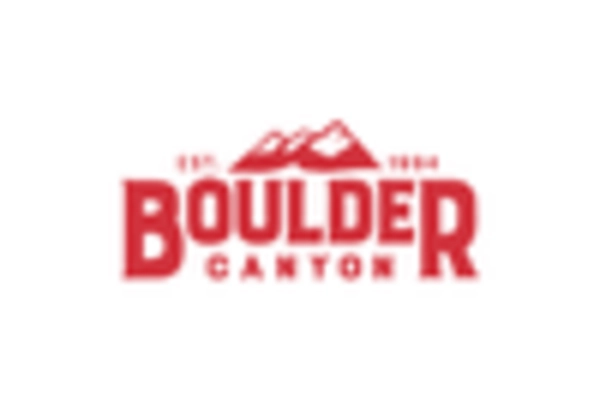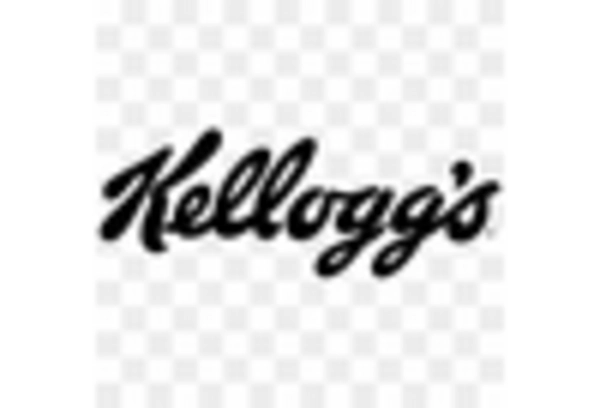Rise of Plant-Based Diets
The shift towards plant-based diets is another notable driver influencing the High Fibre Snacks Market. As more consumers adopt vegetarian or vegan lifestyles, the demand for snacks that align with these dietary preferences is increasing. High fiber snacks, often derived from whole grains, legumes, and fruits, are naturally suited to meet the needs of this growing segment. Market data suggests that plant-based food sales have seen a substantial increase, with many consumers actively seeking snacks that are not only high in fiber but also free from animal products. This trend indicates a potential for growth within the High Fibre Snacks Market, as brands innovate to create appealing, plant-based high fiber snack options.
Innovative Product Offerings
Innovation in product development is a critical driver for the High Fibre Snacks Market. Companies are increasingly focusing on creating unique and diverse high fiber snack options to attract a broader consumer base. This includes the introduction of snacks that combine fiber with other health benefits, such as added protein or superfoods. Recent market analysis shows that consumers are drawn to products that offer functional benefits, which has led to a surge in the availability of high fiber snacks that cater to specific dietary needs. As brands continue to innovate and diversify their product lines, the High Fibre Snacks Market is likely to experience sustained growth.
Evolving Consumer Preferences
Evolving consumer preferences are shaping the landscape of the High Fibre Snacks Market. As consumers become more discerning about their food choices, there is a noticeable shift towards snacks that are perceived as healthier and more nutritious. This trend is reflected in the increasing demand for high fiber snacks that are low in sugar and free from artificial additives. Market Research Future indicates that consumers are willing to pay a premium for snacks that align with their health goals, which presents an opportunity for brands to position their high fiber offerings as superior choices. As these preferences continue to evolve, the High Fibre Snacks Market is poised for growth.
Health Conscious Consumer Trends
The increasing awareness of health and wellness among consumers appears to be a primary driver for the High Fibre Snacks Market. As individuals become more informed about the benefits of dietary fiber, including improved digestion and weight management, the demand for high fiber snacks is likely to rise. Recent data indicates that a significant portion of the population actively seeks snacks that contribute to their overall health. This trend is further supported by the growing prevalence of lifestyle-related diseases, which has prompted consumers to make more health-conscious choices. Consequently, manufacturers are responding by developing innovative high fiber snack options that cater to this health-focused demographic, thereby expanding the High Fibre Snacks Market.
Increased Availability of High Fibre Ingredients
The growing accessibility of high fiber ingredients is significantly impacting the High Fibre Snacks Market. As more suppliers enter the market, the availability of ingredients such as oats, chia seeds, and legumes has expanded, allowing manufacturers to create a wider range of high fiber snacks. This increase in ingredient availability not only supports product innovation but also helps to lower production costs, making high fiber snacks more affordable for consumers. Market trends indicate that as ingredient sourcing becomes more efficient, the High Fibre Snacks Market will likely see an influx of new products that appeal to health-conscious consumers.


















Leave a Comment